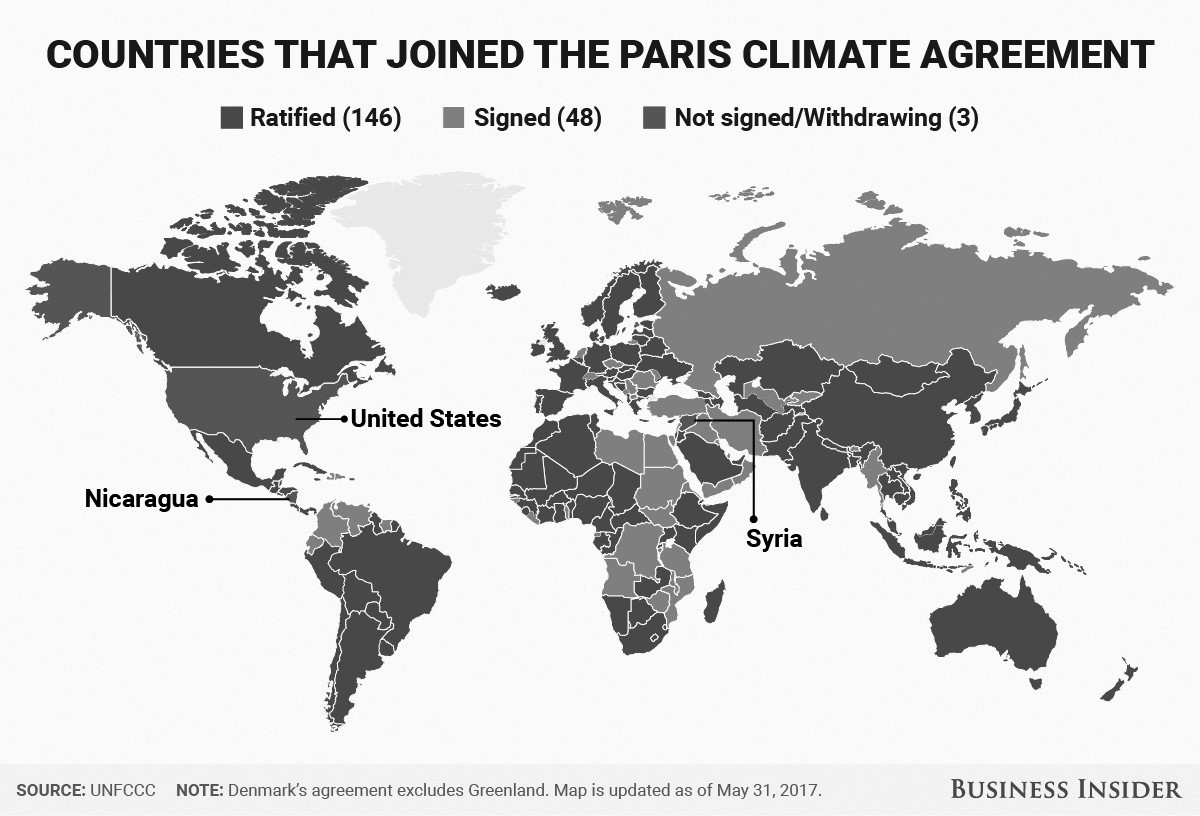The Paris Climate Agreement was, depending on who you ask, either one of the greatest achievements of the international community or one of its greatest failures. Bringing together 195 countries, the agreement aims to create a road map for combatitng climate change. While the initial plan would only limit increases in global temperature to 2.7 degrees Celsius, the agreement contains procedures for increasing member-state participation, which aim to reduce the temperature rise to only 1.5 degrees Celsius. Most of the reduction in temperature increases would come from dramatic cuts to fossil fuel use by countries around the world.
While the Paris Agreement lays out guidelines, each country submits its proposal for green house reductions individually. This fact was one of the major reasons for President Donald Trump’s decision to leave the agreement last June, as he argued that the agreement would put restrictions on U.S. sovereignty, while other countries would be able to take advantage. Citing economic harm to the U.S., Trump has begun the four year process of withdrawing from the agreement while suggesting that he would be open to a renegotiation. However, Trump’s commitment to leaving the deal was called into question this past Sunday when Secretary of State Rex Tillerson suggested that the president was open to finding a way to keep the U.S. in the agreement. While administration officials were quick to correct Tillerson, as has often been the case, confusion remains over Trump’s real goals and intentions.
The US withdrawal represented a major blow to the agreement, while further casting into doubt the US’s commitment to global leadership in the age of Trump. As the world’s second largest emitter of greenhouse gases, a US failure to implement reductions would make it difficult, if not impossible, for the rest of the world to keep temperature rise below the two degrees that climate scientists consider the maximum safe increase. Bridget Ireland ‘18, speaking as the Chair of the Environmental Conservation Committee in Thelmo, described Trump’s decision to leave as “concerning, I thought the US was making strides and now we are sitting alongside some very environmentally unfriendly countries.” Only Nicaragua and Syria join the US outside of the agreement.
While the deal has been widely praised, there are many in the US who join President Trump in his skepticism of the agreement. The libertarian leaning Reason Magazine describes the agreement’s failures as mainly one of enforcement. While each country submits a plan for greenhouse gas reductions, there is very little in the agreement that can get them to follow through on the plan. Furthermore, the 2.7 degree reduction goal, enshrined in the original text of the deal, is well above the 2 degree danger threshold. Many on the right view the agreement as a futile attempt to limit human productivity for little gain in actually combatting climate change. On the left, critics suggest that the agreement does not go far enough and is toothless.
Regardless of the efficacy of the Paris Agreement or the US’s role in the agreement, climate change remains a major issue that is seriously impacting communities across the globe, including in the United States. We can only hope that President Trump has a plan for combatting this global threat as the dangers increase.



